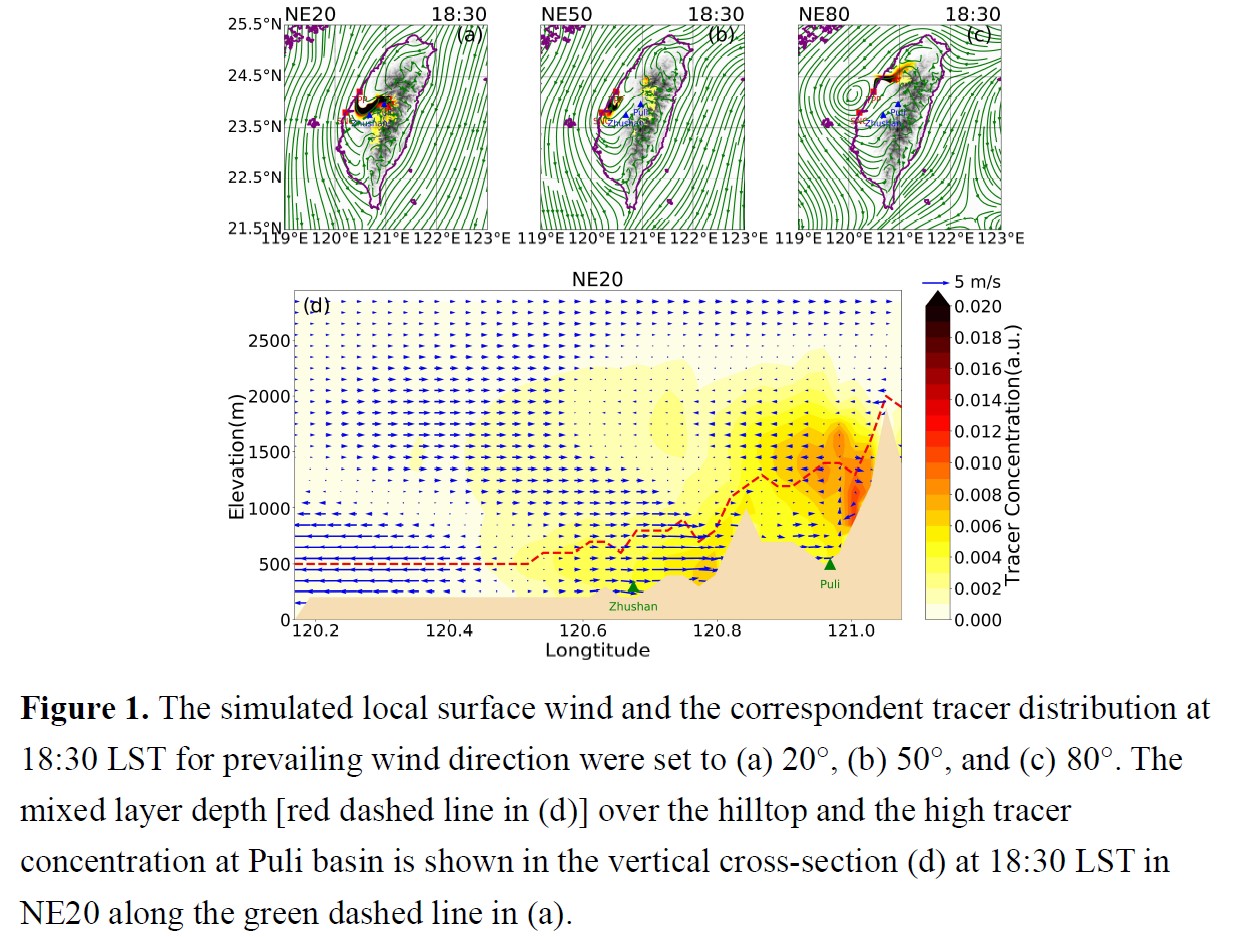Graphical Abstract
Hsieh, M.-K., Y.-W. Chen, Y.-C. Chen, and C.-M. Wu, 2022: The roles of local circulation and boundary layer development in tracer transport over complex topography in central Taiwan. J. Meteor. Soc. Japan, 100, 555-573.
https://doi.org/10.2151/jmsj.2022-028
Graphical Abstract
Published
Plain Language Summary: The PM2.5 concentration tends to be high in central Taiwan under northeasterly monsoon. We examine the essential pollutant transport and accumulation mechanism in central Taiwan by conducting high-resolution idealized tracer transport TaiwanVVM simulations. We conclude that the lee vortex, which is induced by the blocking effect of the Central Mountain Range of Taiwan to the northeasterly monsoon, controls the tracer transport in the plain areas of central Taiwan. Once the pollutant is transported to the mountain areas, the diurnal variation of the boundary layer development over complex topography could further decide the nighttime local pollutant concentration in the Puli basin.
Highlights:
- Under northeasterly due east (due north) environment, the pollutant transported from the southern source (northern source) at the coastal area of central Taiwan are most likely to induce high concentrations in Puli at night.
- The slight change in the wind direction of the northeasterly monsoon (from 20° to 80°) and the emission site locations (40 km along the coastline) could result in a sharp difference in the pollutant transport scenarios.
- The thinning of mixed-layer depth in the evening prevents the pollutant from being transported across the hilltops around the Puli basin and results in a high pollutant concentration at night.







